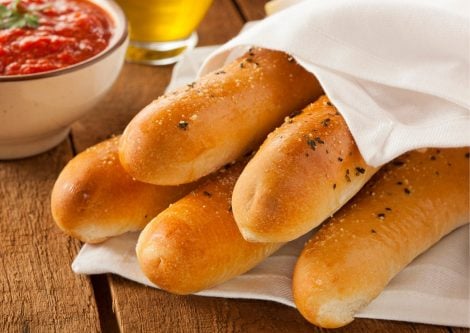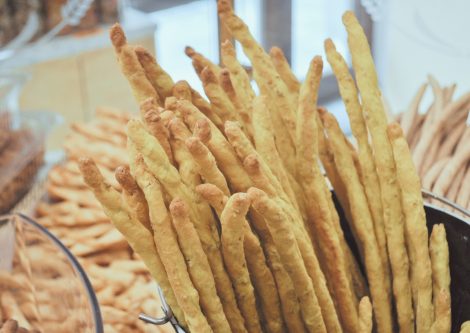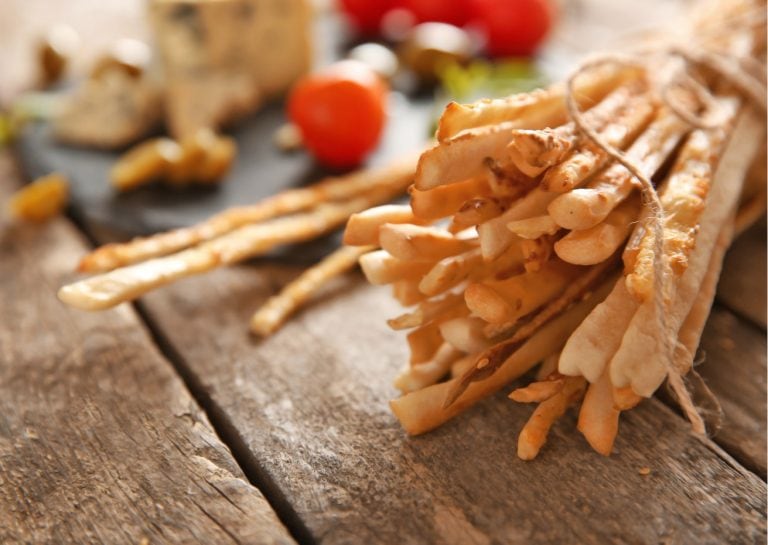The effects of international crises on consumer spending does not prevent one of the icons of Italian taste from reaching tables worldwide. In fact, breadsticks even have an international day dedicated to them. The "Breadstick Day," a day that celebrates the art of breadsticks on an international level.

Inflation and Rising Costs
According to data from the Ismea-NielsenIQ Food Consumption Observatory, in the first half of 2023, grocery shopping costs Italians 10% more compared to the first half of 2022, starting with the bread and grains sector (+15.6%), and driving the trend is the "bread and substitutes" segment (+17.8%). In absolute terms, this represents an increase of over 5 billion euros, with the monthly shopping cart becoming lighter in volume as a result.
However, there is good news hailing from the United States, where Global Market Insights (market research and consulting firm) estimates that the business will gain 24 billion dollars by 2026. Speaking of sector segmentation, it is presumed that the breadsticks sector will hold a 15% share, equivalent to 3.6 billion dollars, of the successful American turnover within the forecast period, thanks to the product's demonstrated versatility.

Grissini in the States
In the USA, it was Italian immigrants who popularised Italian cuisine and specialties. Most of the old regional recipes, in order to adapt to the available ingredients and the palates of the local population, were modified over time.
Eggplant Parmigiana becomes "chicken parm," capocollo turns into "gabagool," and Bologna's most famous deli meat is called "murtadell." Even breadsticks change, and over the years, they become symbols of opulence and the American Dream: thick, sponge-like batons, resembling baguettes, greasy and oftentimes coated with sesame seeds, dried garlic, fried onions, the ubiquitous dried oregano, tomato sauce, and more. They have nothing in common with the slender Turinese breadsticks so beloved by the nobility and the House of Savoy.

The Birth of Breadsticks
Tradition places the birth of breadsticks around 1679 when a local baker Antonio Brunero invented long, thin strips of crunchy bread specifically for Vittorio Amedeo II of Savoy, the future King of Sardinia. Vittorio Amedeo was a young man with delicate health and a fragile stomach that couldn't even tolerate the crumb of bread. Brunero created a dough with water, flour, yeast, and salt, which he stretched to make it thin and crisp.
The name "grissino" comes from "ghersa" or "grissia," which was a traditional elongated bread in Piedmont made from barley, rye, and wheat flour popular since the 14th century. The success was immediate. Carlo Felice, the ruler from 1821 to 1831, enjoyed them during shows at the Teatro Regio, and the upper bourgeoisie and nobility quickly followed suit. The popularity soon spread beyond the borders of the Kingdom of Sardinia. Even King Louis XIV of Bourbon, the Sun King, had Turin bakers sent to Paris to ensure a supply of freshly made breadsticks. In the early 19th century, Napoleon Bonaparte established a stagecoach service between Turin and Paris mainly for the delivery of what he called "les petits bâtons de Turin," the little sticks from Turin.
The rapid success of breadsticks extended beyond noble courts, thanks to their high digestibility compared to common bread, their shelf life of nearly two weeks, and the resulting ease of packaging and transportation. Crossing national borders, the success of breadsticks became global.

The Various Types of Breadsticks
An essential element on the tables of restaurants and households, the stirati variety of long, thin breadsticks are not the only to enjoy worldwide success. Also from Piedmont are the knotty and irregular "rubatà" breadsticks, typical of the town of Chieri. They are made with soft wheat flour, yeast, water, malt, olive oil, lard, and salt, and they are hand-rolled, stretching up to 60 centimetres. Then there are the sweet breadsticks from Pavia, ideal for dipping into the sweet wine of the Oltrepò region. Alternatively, there are the rustic breadsticks from Friuli, called "grispolenta" because they are made with cornmeal.


 Women are the best sommeliers. Here are the scientific studies
Women are the best sommeliers. Here are the scientific studies Where to eat at a farm stay in Sicily: the best addresses in the Provinces of Trapani, Palermo, and Agrigento
Where to eat at a farm stay in Sicily: the best addresses in the Provinces of Trapani, Palermo, and Agrigento Wine in cans, bottle-fermented, and alcohol free: the unstoppable change in Gen Z’s tastes
Wine in cans, bottle-fermented, and alcohol free: the unstoppable change in Gen Z’s tastes The great Bordeaux exodus of Chinese entrepreneurs: around fifty Châteaux up for sale
The great Bordeaux exodus of Chinese entrepreneurs: around fifty Châteaux up for sale Dubai speaks Italian: a journey through the Emirate's best Italian restaurants
Dubai speaks Italian: a journey through the Emirate's best Italian restaurants







